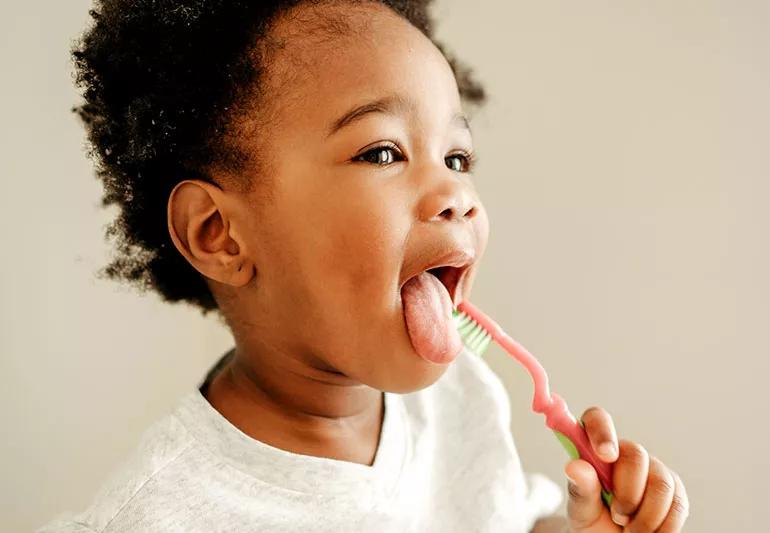Start using fluoride with baby's first teeth

What’s the most common chronic disease in children? Tooth decay.
Advertisement
Cleveland Clinic is a non-profit academic medical center. Advertising on our site helps support our mission. We do not endorse non-Cleveland Clinic products or services. Policy
This infectious disease is caused by bacteria in your child’s mouth. As the bacteria metabolize carbohydrates they produce acid that over time, destroys tooth enamel and causes cavities.
But according to pediatrician Isabelita Guadiz, MD, the good news is that you as a parent can help prevent this problem early on and throughout every age of childhood.
There are steps you can take as early as the infant stage to begin protecting your child from tooth decay.
Tooth decay is dependent on what goes into their mouth and how long it stays there. That’s why the best rule of thumb for newborns and infants is — don’t put your baby to bed with a bottle of milk or juice. Bacteria and sugars from both can rest too long in baby’s mouth through nap time or overnight which increases opportunity for decay.
Researchers at the American Academy of Pediatrics (AAP) say using fluoride toothpaste as early as when teeth are first appearing is key to stopping cavities from forming. Fluoride is a mineral that occurs naturally in many foods and water and helps prevent decay by making teeth more resistant to acid attacks on tooth enamel.
They advise parents to use an extra-soft bristled brush with a tiny amount of fluoride toothpaste for babies as soon as those first two teeth pop in on the bottom.
Advertisement
Twice per day (especially before bedtime) parents should apply a dab of toothpaste the size of a grain of rice right onto the teeth, and brush gently if possible.
At any age, parents are advised to help their kids brush their teeth for two minutes, twice a day. It’s a good habit that can be challenging for parents to help their children develop, but well-worth the effort down the road. Your child should also floss at least once per day.
Here’s a recap of expert tooth care advice for children of all ages.
Following these recommendations is critical because early childhood tooth decay is the single greatest risk factor for cavities in your child’s permanent teeth.
Researchers found that as many as 59 percent of 12- to 19-year-olds have at least one documented cavity. But fluoride toothpaste reduces tooth decay in children by 15 to 30%, according to the Centers for Disease Control.
There are some risks of fluoride use, like fluorosis which can cause tooth discoloration. The majority of cases in the U.S. are mild and involve white streaks and opaque areas on the teeth. But the risk for developing fluorosis mostly passes by age 8.
“Help your children take care of their teeth early, and as they get older try to reinforce the importance of brushing after meals,“ Dr. Guadiz says. “These good habits will stay with them their throughout their lifetime — and be sure to visit their pediatrician and dentist each year.”
Advertisement
Learn more about our editorial process.
Advertisement

Combat summer learning loss and keep young brains engaged with low-pressure learning

Heap on the praise for a job well done and stay consistent

Have their eyes evaluated shortly after birth, before their first birthday, and at ages 3, 5 and beyond

Routine screenings at school are normal and important

Teaching kids how to share at the appropriate age can help them develop social skills and manage their emotions

By disrupting a child’s ability to think and act for themselves, snowplow parents run the risk of delaying their child’s ability to learn

Creating a pal in their mind can help children learn social skills, overcome fears and build creativity

Keep your child healthy and happy in the heat by ensuring they’re drinking water and taking breaks

The best parenting style balances enforcing rules and showing plenty of love

Tips include cutting back on sugar, focusing on exercise and managing stress

It can be harder to let go when you’ve invested time, energy and emotions — but it might be the healthier choice long term